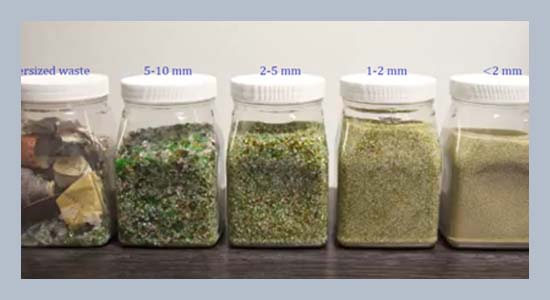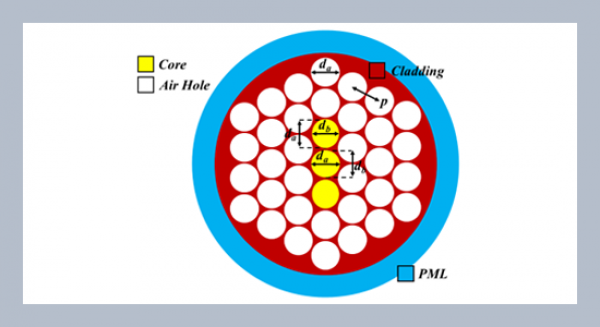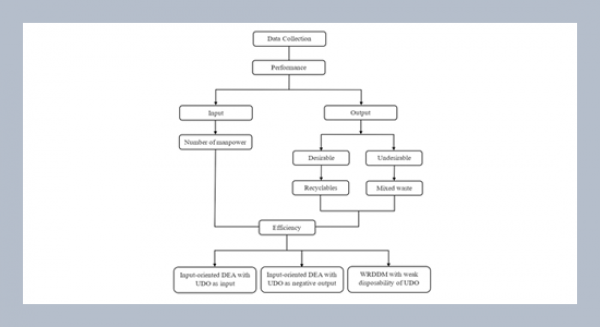REFERENCES
- Aakash, D.P., Devendra, B.G. 2018. Engineering properties of clay bricks with the use of fly ash. Int. J. Res. Eng. Technol. 03, 75–80 Google Scholar
- Al-Nu’man, B.S., Aziz, B.R., Abdulla, S.A., Khaleel, S.E. 2015. Compressive Strength Formula for Concrete using Ultrasonic Pulse Velocity. Int. J. Eng. Trends Technol. IJETT 2015, 26, 8–13
- Aneke FI, Okonta FN and Ntuli F. 2015. Geotechnical Properties of Marginal Highway Backfill Stabilized with Activated Fly Ash Msc Thesis, Dep. Of Civil Eng. Sci. And Built Envir. University of Johannesburg, Gauteng, South Africa.
- Aneke, F.I., Awuzie, B. 2018. Conversion of industrial wastes into marginal construction materials, Acta Structilia, 25 2, 119–137, 10.18820/8820/24150487/as25i2.5
- Aneke, F.I., Shabangu, C. 2021. Green-efficient masonry bricks produced from scrap plastic waste and foundry sand, Case Studies in Construction Materials, Volume 14, 2021, e00515, ISSN 2214–5095, https://doi.org/10.1016/j.cscm.2021.e00515
- Aneke, F. I, Shabangu, C. 2021. Strength and durability performance of masonry bricks produced with crushed glass and melted PET plastics, Case Studies in Construction Materials, 14, 2021, e00542, ISSN 2214–5095, https://doi.org/10.1016/j.cscm.2021.e00542
- Aneke, F.I., Awuzie, B.O., Mostafa, M.M.H., Okorafor, C. 2021. Durability Assessment and Microstructure of High-Strength Performance Bricks Produced from PET Waste and Foundry Sand. Materials, 14, 5635. https://doi.org/10.3390/ma14195635
- Aneke, F. I., Mostafa, M. H., and Moubarak, A. 2021. Resilient modulus and microstructure of unsaturated expansive subgrade stabilized with activated fly ash, International Journal of Geotechnical Engineering, 15, 915–938, 10.1080/19386362.2019.1656919
- Arati, S., Nagesh, H., Shashishankar, A. 2021. Experimental Studies on Fly Ash Based Lime Bricks, ISSN (Online): 4, 2347–2812.
- ASTM C20-00, Standard Test Methods for Apparent Porosity, Water Absorption, Apparent Specific Gravity, and Bulk Density of Burned Refractory Brick and Shapes by Boiling Water, ASTM International, West Conshohocken, PA, 2000, www.astm.org
- ASTM C67, Standard Test Methods for Sampling and Testing Brick and Structural Clay Tile, ASTM International, West Conshohocken, PA, 2003, www.astm.org
- ASTM C597-16, Standard Test Method for Pulse Velocity through Concrete, ASTM International, West Conshohocken, PA, 2016, www.astm.org
- ASTM D1140. Standard Test Methods for Determining the Amount of Material Finer than 75-μm (No. 200) Sieve in Soils by Washing, ASTM International, West Conshohocken, PA, 2017, www.astm.org
- ASTM C1012 / C1012M-18b, Standard Test Method for Length Change of Hydraulic-Cement Mortars Exposed to a Sulfate Solution, ASTM International, West Conshohocken, PA, 2018, www.astm.org
- ASTM C618-19, Standard Specification for Coal Fly Ash and Raw or Calcined Natural Pozzolan for Use in Concrete, ASTM International, West Conshohocken, PA, 2019, www.astm.org
- ASTM C67 / C67M-20, Standard Test Methods for Sampling and Testing Brick and Structural Clay Tile, ASTM International, West Conshohocken, PA, 2020, www.astm.org
- ASTM C583-15, Standard Test Method for Modulus of Rupture of Refractory Materials at Elevated Temperatures, ASTM International, West Conshohocken, PA, 2021, www.astm.org
- Balksten, K., Strandberg-de Bruijn, P. 2021. Understanding Deterioration due to Salt and Ice Crystallization in Scandinavian Massive Brick Masonry. Heritage, 4, 349 ASTM C597-16, Standard Test Method for Pulse Velocity through Concrete, ASTM 370. https://doi.org/10.3390/heritage4010022
- Basha, S.H, Kaushik, H.B. 2014. Evaluation of nonlinear material properties of fly ash brick masonry under compression and shear. J. Mater. Civ. Eng. (ASCE) 27, 04014227.
- Council for Scientific and Industrial Research (CSIR). 2014. Economic value of South Africa’s waste (preliminary). A waste research, development, and innovation (RDI) roadmap for South Africa. 1, 11–12.
- EPA, Advancing Sustainable Materials Management:2017 Fact Sheet, 2019.
- Eskom, 2015. Eskom Integrated Report IR2015. www.eskom.co.za/IR2015, accessed October 2016.
- Eskom, 2016. Eskom Holdings Ash Strategy 2016–2020. Revision 7. Unpublished data.
- Fei, W., Huiyuan, B., Jun, Y., Yonghao, Z. Correlation of Dynamic and Static Elastic Parameters of Rock, Electronic Journal of Geotechnical Engineering 21 1551–1560
- FEVE, Record collection of glass containers for recycling hits 76% in the EU.
https://feve.org/record-collection-of-glass-containers-for-recycling-hits-76- in-the-eu/, 2019
- Franzoni, E., Gentilini, C., Graziani, G., Bandini, S. 2015. Compressive behaviour of brick masonry triplets in wet and dry conditions. Constr Build Mater 82, 45–52. (https://doi. org/10.1016/j.conbuildmat.2015.02.052)
- Eliche-Quesada, D., Sánchez-Martínez, J., Felipe-Sesé, M.A. 2019. Silica–Calcareous Non-Fired Bricks Made of Biomass Ash and Dust Filter from Gases Purification. Waste Biomass Valor 10, 417–431. (https://doi.org/10.1007/s12649-017-0056-1)
- Granneman, S.J.; Lubelli, B.; Van Hees, R.P. 2019. Mitigating salt damage in building materials by the use of crystallization modifiers—a review and outlook. J. Cult. Herit. 2019, 40, 183–194. [CrossRef]
- Hasan, M.R., Siddika, A., Akanda, M.P.A. 2021. Effects of waste glass addition on the physical and mechanical properties of brick. Innov. Infrastruct. Solut. 6, 36. https://doi.org/10.1007/s41062-020-00401-z
- Kaza, S., Yao, L., Bhada-Tata, P., Van- Woerden, F. 2018. What A Waste 2.0: A Global Snapshot of Solid Waste Management to 2050 (Urban Development Series) (Washington, DC: World Bank) https://doi.org/10.1596/978-1-4648-1329-0
- Laven, S., Vosloo, M., Meyer-Douglas, S. 2016. Motivation for the Application for Exemption of Waste Management Activity Licences for Specific Uses of Pulverized Coal Fired Boiler Ash in Terms of GN R. 634. Zitholele Consulting Report 16005-41-Rep-001-Eskom Ash GN, R 634 Application-Rev2
- Liu, Y., Siang, B., Hu, Z., Yang, E. 2017. Autoclaved aerated concrete incorporating waste aluminium dust as a foaming agent,” Constr. Build. Mater., 148, 140–147.
- McCormac, J.C., Brown, R.H. 2015. Design of Reinforced Concrete, Wiley, Hoboken, 2015
- Naik, N., Bahadure, B., Jejurkar, C. 2014. Strength and durability of Fly ash, cement and gypsum bricks, Int. J. Comput. Eng. Res. 4, 1–4.
- Prabhat, K. S., Rohit, K., Satya, P.D., 2019. Study of Compressive Strength of Fly-SH Brick, International Journal of Engineering Research & Technology (IJERT), 08.
- Pravez, A., Davinder, S., Sanjeev, K. 2021. Incinerated municipal solid waste bottom ash bricks: A sustainable and cost-efficient building material, Materials Today: Proceedings, 2021, ISSN 2214-7853, https://doi.org/10.1016/j.matpr.2021.07.346
- SANS 227:2007 and SANS 1 575. 2007. the South African National Standard for burnt clay paving units, ISBN 978-0-626-19745-2
- Safeer, A., Muhammad, A. S., Syed, M.S. K., Muhammad, J. M. 2017. Production of sustainable clay bricks using waste fly ash: Mechanical and durability properties, Journal of Building Engineering, 14, 7–14, ISSN 2352-7102, https://doi.org/10.1016/j.jobe.2017.09.008.
- Sarkar, N., Faris, A. 2019. Mechanical properties of clay masonry units: Destructive and ultrasonic testing, Construction and Building Materials, 219, 2019, 111–120, ISSN 0950-0618, (https://doi.org/10.1016/j.conbuildmat.2019.05.166)
- Shaqour, E.N., Abo Alela, A.H. and Rsheed, A.A. 2021. Improved fired clay brick compressive strength by recycling wastes of blacksmiths’ workshops. J. Eng. Appl. Sci. 68, 5. https://doi.org/10.1186/s44147-021-00002-2
- Stefanidou, M., Papayianni, I., Pachta, V. 2015. Analysis and characterization of Roman and Byzantine fired bricks from Greece. Mater Struct 48, 2251–2260. https://doi.org/10. 1617/s11527-014-0306-7
- Sufian, M.; Ullah, S.; Ostrowski, K.A.; Ahmad, A.; Zia, A.; Śliwa-Wieczorek, K.; Siddiq, M.; Awan, A.A. 2021. An Experimental and Empirical Study on the Use of Waste Marble Powder in Construction Material. Materials, 14, 3829. https://doi.org/10.3390/ma14143829
- Sutas, J., Mana, E., Arpapan, S., Watcharakhon, N. 2018. Effect of bagasse and bagasse ash levels on properties of pottery products, Heliyon, 4, e00814, ISSN 2405-8440, https://doi.org/10.1016/j.heliyon.2018.e00814
- Syed, M.S.K., Safeer, A., Muhammad, A. S, Muhammad, J. M., Anwar, K. 2016. Manufacturing of sustainable clay bricks: Utilization of waste sugarcane bagasse and rice husk ashes, Construction and Building Materials, 120, 29–41, ISSN 0950-0618, https://doi.org/10.1016/j.conbuildmat.2016.05.084
- Ukwatta, A., Mohajerani, A., Eshtiaghi, N., Setunge, S. 2016. Variation in physical and mechanical properties of fired-clay bricks incorporating ETP biosolids, J. Clean. Prod. 10.1016/j.jclepro.2016.01.094
- Velasco, P., Ortiz, M., Giro, M., Velasco. L. 2014. Fired clay bricks manufactured by adding wastes as sustainable construction material – a review, Constr. Build. Mater. 63 (2014) 97–107.
- Yehia S, El-Didamony, and M., Elsayed, T. 2017. Low-cost housing in Egypt by using stabilized soil bricks. International Journal of Civil, Mechanical and Energy Science 3, 154–165 https://doi.org/10.24001/ijcmes.3.3.1
- Yongue-Fouateu. R, Ndimukong, F., Njoya, A., Kunyukubundo, F., Mbih, P.K. 2016. The Ndop plain clayey materials (Bamenda area-NW Cameroon): Mineralogical, geochemical, physical characteristics and properties of their fired products, J. Asian Ceram. Soc. 4, 299–308. 10.1016/ j. jascer.2016.05.008
- Yu, J.-H., Park, J.-H. Compressive and Diagonal Tension Strengths of Masonry Prisms Strengthened with Amorphous Steel Fiber-Reinforced Mortar Overlay. Appl. Sci. 2021, 11, 5974. https://doi.org/10.3390/app11135974















